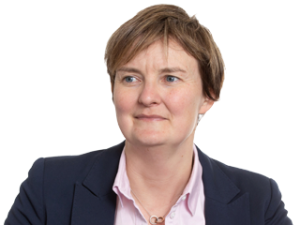The so-called ‘super-deduction’ and special rate first-year allowance were introduced in the 2021 Budget. Their aim is to encourage firms to grow post-Covid by investing in productivity-enhancing plant and machinery assets. But what should you look out for?
The two allowances took effect for the period 1 April 2021 to 1 April 2023. In this article we look in more detail at the possible limitations and pitfalls of the relief.
As the temporary rules will end in the next year, it’s important to understand how the rules will transition and what comes next.
Date expenditure is incurred
The rules for timing of relief were tweaked specifically for the announcement of the new capital allowance rules. Usually, if spend occurs before a company begins trading, it’s treated as being incurred on the first day the activity is carried on and attracts the allowances available on that date.
But this doesn’t apply to the super-deduction and special rate first-year allowance. The expenditure must be incurred during the specified period 1 April 2021 to 31 March 2023.
What are the exceptions?
There are various assets that don’t qualify for the super-deduction or special rate allowance:
- used and second-hand assets
- expenditure on contracts entered into before 3 March 2021
- assets used for a ring fence trade
- expenditure incurred in the chargeable period in which the qualifying activity is permanently discontinued
- cars
- buildings and structures (except integral features)
- expenditure excluded from long life asset treatment by ‘grandfather provisions’
- expenditure on the provision of plant and machinery for leasing
- if the claim is in connection with a change in the nature or conduct of a trade or business carried on by a person other than the person incurring the expenditure (only if claiming the super-deduction is one of the main benefits expected to arise from the change).
Anti-avoidance rules
There are anti-avoidance rules that counteract any arrangements where their purpose, or one of their main purposes, is to obtain a tax advantage. That could be in relation to the super-deduction, the special rate allowance or the avoidance of a balancing charge. The rules apply when the arrangements are contrived, lack a genuine commercial purpose or are intended to avoid the limits of the relief.
Transition from super-deduction and special rate allowance
The super-deduction and special rate allowance will no longer be available from 1 April 2023. Instead, the capital allowance rules in place before 1 April 2021 will apply.
Plant and machinery will qualify for main pool allowance at 18% per annum and special rate pool items will be deductible at 6% per annum. The Annual Investment Allowance (AIA) will also be available to relieve expenditure after 1 April 2023. The maximum AIA that can be claimed will be £200,000 per annum (time apportioned accordingly for shorter periods).
The super-deduction available in a chargeable accounting period that ends on or after 1 April 2023 will be proportionately reduced. This is to prevent overlap with the period where the Corporation Tax rate increases to 25%.
The relevant allowance percentage in the final period where the super-deduction is available is calculated by dividing the total number of days in the chargeable period (up to 31 March 2023) by the total number of days in the whole period. This is then multiplied by 30% and 100%.
For example, the relevant percentage for the period ended 31 December 2023 would be as follows:
(90/365 x 30%) + 100% = 107.4%
This rate is then applied to all qualifying additions in the period.
If you would like to discuss any issues raised in this article, please contact Catherine Heyes.


